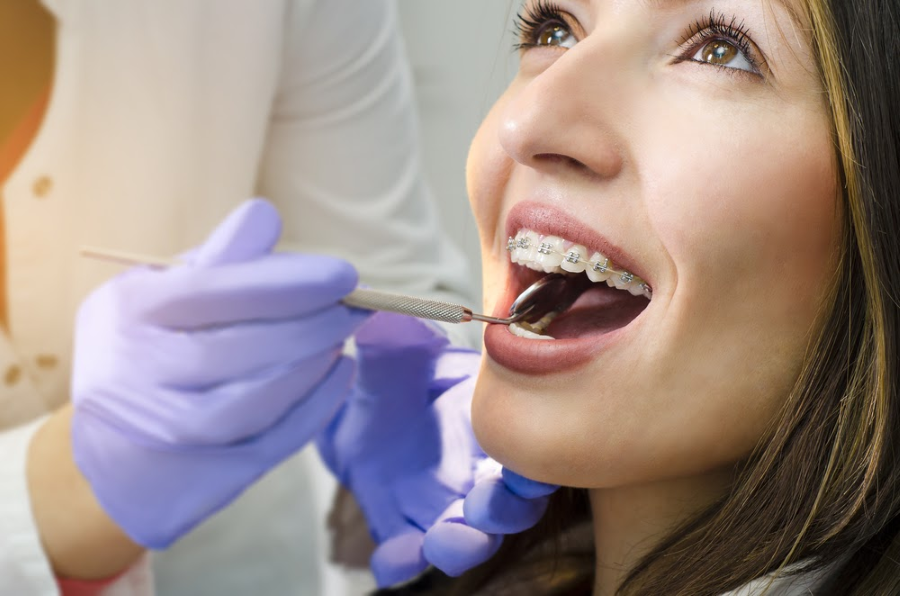Everything about Legacy Orthodontics
See This Report about Legacy Orthodontics
Table of ContentsThe Legacy Orthodontics DiariesThe smart Trick of Legacy Orthodontics That Nobody is Talking AboutNot known Incorrect Statements About Legacy Orthodontics Not known Facts About Legacy OrthodonticsThe Basic Principles Of Legacy Orthodontics
At Advanced Orthodontics, we give individuals with a holistic treatment experience. Additionally, we provide adjustable therapy timetables, flexible settlement alternatives and a fun, pleasurable experience. orthodontics. Telephone call ( 480) 357-4900 today for more info and routine a consultation.An orthodontist is a dental practitioner trained to diagnose, avoid, and treat teeth and jaw abnormalities. They deal with existing conditions and are educated to identify issues that might develop in the future. Orthodontists collaborate with individuals of all ages, from children to grownups. Individuals typically link an ideal smile with healthiness.
Malocclusion, or misaligned teeth, can cause oral issues, consisting of tooth degeneration, periodontal illness, and challenging or uncomfortable eating. Yet not everyone is born with straight teeth. If you have a poor bite or large areas in between your teeth, you may intend to seek advice from a dental expert concentrating on orthodontic treatment.
The 10-Second Trick For Legacy Orthodontics
( Image Credit Rating: DigitalVision/Getty Images) Orthodontists utilize taken care of and removable dental devices, like dental braces, retainers, and bands, to alter the position of teeth in your mouth. Orthodontic therapy is for oral irregularities, including: Uneven teethBite issues, like an overbite or an underbiteCrowded teeth or teeth that are as well much apartJaw misalignmentThe objective of orthodontic treatment is to enhance your bite.
A healthy and balanced bite ensures you can eat, chew, and speak properly. While you might believe of orthodontists as primarily for children or teens that require dental braces, they can correct dental troubles at any kind of age. Orthodontists go to university, oral college, and orthodontic college. After graduation, they spend 2 or 3 years in an orthodontic residency program.
All orthodontists are dentists, however not all dental practitioners are orthodontists. Orthodontic residency programs offer extensive, concentrated guideline for dental experts. They concentrate on 2 locations: Exactly how to correctly and securely relocate teeth Exactly how to properly assist advancement in the teeth, jaw, and faceOnce an orthodontist has completed training, they have the alternative to become board accredited.
The Legacy Orthodontics Ideas
Imbalance, or malocclusion, is the most typical factor individuals see an orthodontist. It is hereditary and is the result of size differences in between the top and lower jaw or in between the jaw and teeth. Malocclusion causes tooth overcrowding, a twisted jaw, or uneven bite patterns. Malocclusion is usually treated with: Your orthodontist connects steel, ceramic, or plastic square bonds to your teeth.
If you have just small malocclusion, you might have the ability to utilize clear braces, called aligners, rather than typical dental braces (https://www.reverbnation.com/legacyorthodontics). Some individuals require a headgear to help move teeth into line with stress from outside the mouth. After dental braces or aligners, you'll need to wear a retainer. A retainer is a customized device that keeps your teeth in position.
They can produce additional space in the mouth without having to pull teeth. Orthodontists make use of cables, surgical screws, or plates to sustain your jaw bone.
You might require to see an orthodontist if you have: Crowding or not sufficient space for all of your teethOverbite, when your top teeth come over your bottom teethUnderbite, when your bottom teeth are too far forwardSpacing or problems with gapsCrossbite, which is when your upper teeth fit behind your base teeth when your mouth is closedOpen bite or a vertical space in between your front base and upper teethMisplaced midline, when the center of your bottom and upper teeth don't line up Correcting a dental malocclusion can: Make biting, eating, and talking easierImprove the symmetry of our face and your general appearanceEase discomfort from temporomandibular joint problemsSeparate your teeth and make them less complicated to clean, helping protect against tooth decay or cavities It's commonly a dental practitioner that initially notifications misaligned teeth throughout a regular test.
3 Simple Techniques For Legacy Orthodontics

During your first orthodontic appointment, you'll likely have: An oral examPhotos taken of your face and smileDental X-raysPanoramic (360 degree) X-rays of your face and headImpressions to create molds of your teethThese examinations will aid your orthodontist recognize just how to continue with your therapy. braces. An orthodontist is a dentist that's had training to treat your teeth and jaw
An orthodontist is focused on your bite, so something like a damaged tooth would be managed by a dental professional. Orthodontists are focused on your bite, or the means your teeth fit with each other, and the straightness of your teeth.
Ever before wondered just how stars constantly seem to have completely aligned teeth? Orthodontists are oral professionals who concentrate on remedying irregularities in the teeth and jaws.
The Ultimate Guide To Legacy Orthodontics

, orthodontists have a diverse toolkit at their disposal. These tried-and-true braces utilize a system of braces bound to the click to read teeth and attached by cables.
Clear aligners, like Invisalign, are a preferred choice for patients seeking a more discreet treatment alternative. These removable trays are customized to considerably move the teeth's placement. Headwear might be used combined with dental braces or aligners to apply additional targeted pressures, especially for remedying jaw discrepancies. In instances of slim jaws, palatal expanders can be made use of to produce area for appropriate tooth placement.